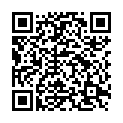|
|
|
| Module code: MST.WEW |
|
|
4V (4 hours per week) |
|
5 |
| Semester: 1 |
| Mandatory course: yes |
Language of instruction:
German |
Assessment:
Written exam
[updated 10.05.2021]
|
MST.WEW (P231-0089, P231-0090, P231-0091) Mechatronics and Sensor Technology, Bachelor, ASPO 01.10.2012
, semester 1, mandatory course
MST.WEW (P231-0089, P231-0090, P231-0091) Mechatronics and Sensor Technology, Bachelor, ASPO 01.10.2011
, semester 1, mandatory course
|
60 class hours (= 45 clock hours) over a 15-week period.
The total student study time is 150 hours (equivalent to 5 ECTS credits).
There are therefore 105 hours available for class preparation and follow-up work and exam preparation.
|
Recommended prerequisites (modules):
None.
|
Recommended as prerequisite for:
MST.PMT
[updated 25.04.2014]
|
Module coordinator:
Prof. Dr. Walter Calles |
Lecturer: Prof. Dr. Walter Calles
[updated 01.10.2005]
|
Learning outcomes:
After successfully completing this module, students will be familiar with the principles of mechanical material behavior and be able to apply them to static loads and processes, determine the characteristic values of tensile tests, interpret them and apply them to simple cases by means of laboratory tests.
They will be familiar with the composition of microstructures.
They will be familiar with the how alloys are formed and will be able to depict them in state diagrams. They will be able to read and interpret state diagrams and schematically depict the microstructural development on the basis of cooling curves and classify real microstructures on the basis of laboratory tests.
Students will be able to show the microstructures in an iron-carbon diagram and the difference between steels and cast iron materials.
They will be able to work with material designation systems and standardization.
Students will be able to select the conditions of a heat treatment in order to adjust the properties for steels and non-ferrous materials on the basis of laboratory tests.
Using TTT diagrams, students will be able to evaluate suitable quenching and tempering conditions for steels and evaluate suitable steels.
They will be able to select surface hardening processes.
They will be able to select the most relevant steels and non-ferrous materials and other materials.
[updated 10.05.2021]
|
Module content:
• Basic terms: strength-deformation-breakage and tensile test
Overview of metallurgy (crystal structure and microstructure, lattice defects and their significance for formability and strength)
Basics of materials technology (diffusion, crystallization, alloy and precipitation formation, microstructure change and influence by diffusion-controlled processes)
Basics of state diagrams (cooling curves, basic types, schematic microstructure, calculation of proportions)
Constitutional diagram iron-carbon (schematic and real microstructural development)
Annealing, hardening and tempering steel
• Overview of steel groups for precision engineering and cast iron materials
• Overview of non-ferrous materials (aluminum and copper materials)
• Plastics (characteristic features, fiber-reinforced materials)
• Ceramic materials (structure, manufacturing, classification and properties)
[updated 10.05.2021]
|
Teaching methods/Media:
Interactive lecture with exercises, supervised lab exercises in small groups with quizes, lab reports by the students, slide sets with animations, schematic and real representations
Bargel/Schulze, Werkstoffe, Springer-Verlag
[updated 10.05.2021]
|
Recommended or required reading:
Bergmann, Werkstofftechnik, Teil 1, Grundlagen, Hanser
Heine, Werkstoffprüfung, Fachbuchverlag Leipzig
[updated 10.05.2021]
|


